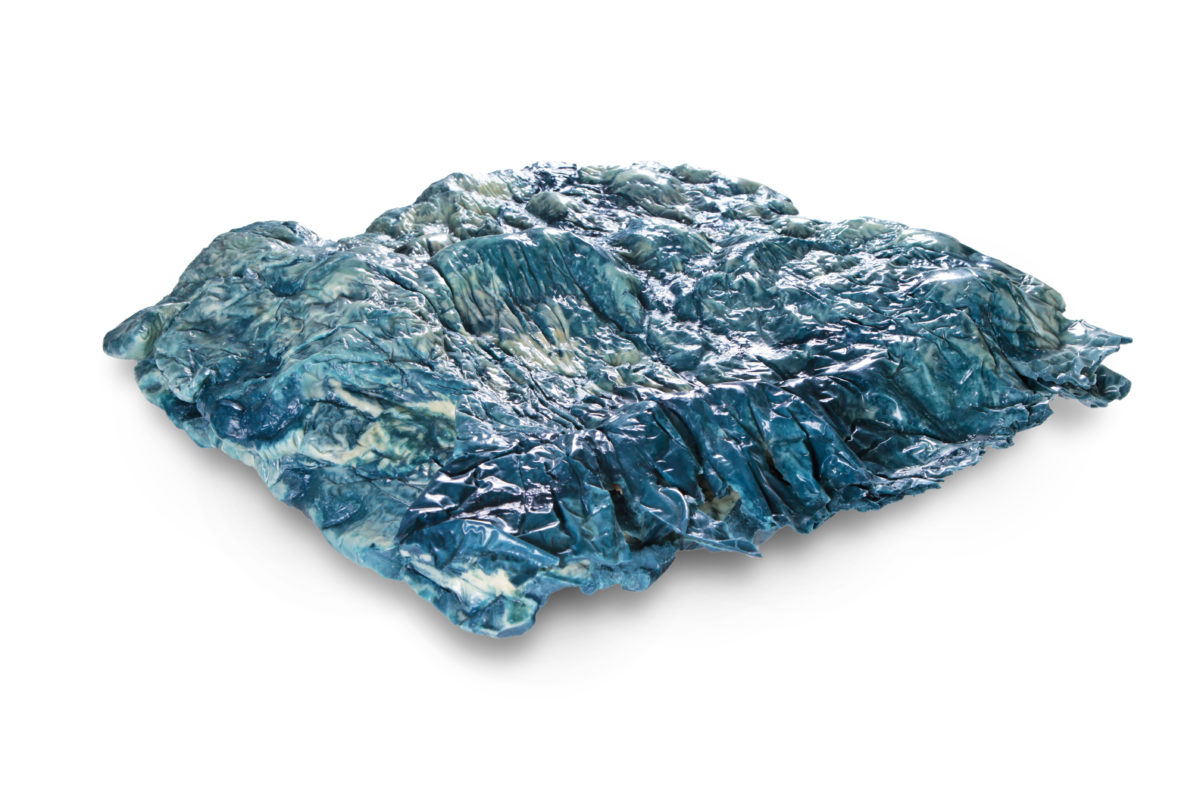The result is invariably somewhat disconcerting. We confront things here that undermine the self-assurance of what already exists. It all calls in question the dependability of the stuff we are used to. Cavities released from the plastic that enveloped them take the stage as objects. We encounter a world of things that has passed through something, that has left something behind. That is also why it keeps eluding our immediate grasp. The ice formations make for a literal experience of this elusiveness. They melt before the beholder’s eyes, they cannot be held in place, they trickle away. Then again, the shapes molded in plaster and wax, too, cannot readily be grasped. Liquid materials have set into solidity, the liquid has nestled into shells that are no longer present, has hardened and, as a solid, attests to a world beyond synthetics and plastic. This solidity is beautiful, enchanting, precious, and fragile. FOUNTAIN is solidified wax while also waxing celebratory: the sculpture is a paean to the simple and magical material.
Wax models are traditionally used in anatomy, where they are known as moulages, and figure in religious contexts as well: representations of the Madonna, the Sacred Heart, crèche figures. Sculptors embed wax models in fireproof materials and melt them out. The material for the sculpture—in most instances, a metal—is cast into the resulting cavity. Claudia Märzendorfer inverts this process, casting wax into the cavity. The result is a sculpture that has none of the solidity of sculptures cast in metal. Like other works by Märzendorfer, it is exceptionally delicate. Its surface is vulnerable, tender, a body on the verge of being-other, of melting away, of falling apart. All that is hard and solid here only seems to be, for this world is highly sensitive and forever exposed to the risk of disintegration. Metamorphotic processes play out under our eyes, cavities are transformed into solid bodies, solid bodies, into precarious existences that might change the determinacy of their form at any moment; a temperature that is a few degrees warmer is all it would take.
There is nothing figurative about Claudia Märzendorfer’s sculptures. And yet they bear a much closer relation to the human body, and indeed to the bodies of all living beings, than any naturalistic representation. They draw our attention to the precariousness of our own existence. And they are beautiful, wonderful, enchanting. That is why there is no better time for FOUNTAIN than our present with all its perils and uncertainties. And there is no better place for this sculpture than the scene of a celebration of the beauty, miracle, and magic of life.
Gustav Schörghofer





